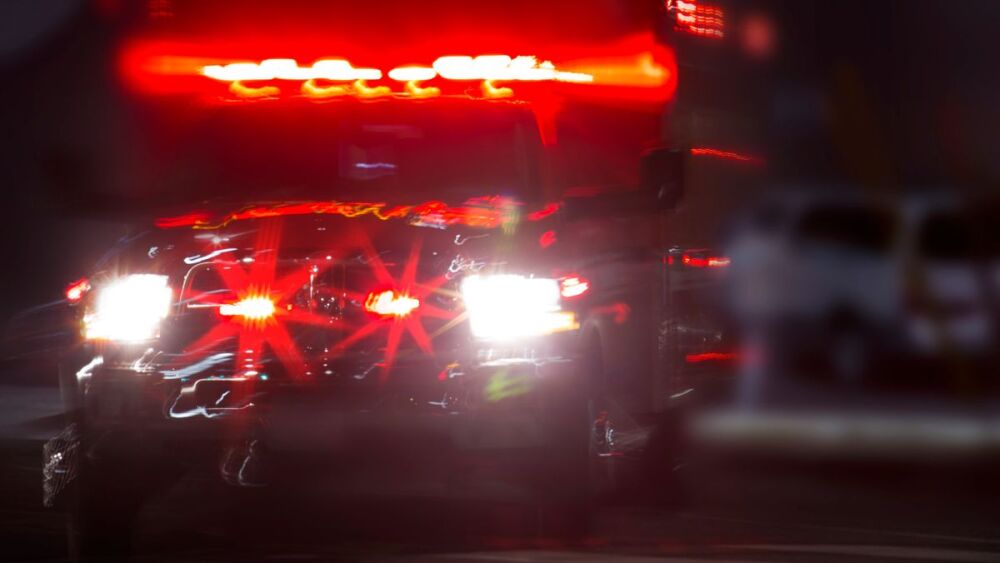By Brian Maloney and Mike Taigman
Plum EMS of Pennsylvania has a track record of making meaningful improvements. From doubling their intubation success rate, to producing consistent top-tier customer satisfaction, this team knows how to produce results. Of the 12,000 calls they have handled in the last four years, they have only had two negative customer surveys, neither of which were related to response time. When they had the opportunity to join the national EMS Quality Improvement Partnership focused on reducing the use of lights and sirens (L&S), they were one of the first to join.
A small service with 26 team members, Plum EMS covers 30 square miles with a population of 30,000, handling 3,000 911 calls per year. They have solid community support, a nice station, nice equipment and good pay. Historically, L&S use was involved in just under 50% of their responses to emergency calls and 26% of their transports to hospitals. Their Pennsylvania Bureau of Emergency Medical Services set a goal in 2015 of using L&S for less than 50% of 911 responses and less than 1% of the time for transports to the hospital. This 1% initially seemed unachievable.
The national project, led by the National EMS Quality Alliance (NEMSQA), aims to reduce crashes involving EMS vehicles by reducing the use of L&S so that more than 70% of responses and 95% of transports from 911 calls are completed without them. Fifty EMS agencies from all over the U.S. are collaborating on this year-long project focused on improving safety for patients, providers and the public.
L&S considerations and evaluation
The Plum team has a culture that values curiosity, feedback, collaboration and shared learning. Their improvements do not involve any punitive action against team members. They review 100% of calls where L&S is used during transport, considering:
- The clinical condition of the patient
- The actions taken by the hospital staff shortly after arrival
- The crew’s perspective
- A Google map assessment of time saved
For example, a recent case involved a patient in respiratory distress with an initial oxygen saturation of 83% and a respiratory rate of 36. While the patient was clearly ill, they were getting better with CPAP treatment. However, the crew chose to use L&S during transport.
When they arrived at the hospital, the emergency medicine team didn’t do anything for the first 20 minutes other than maintaining the CPAP. This case was reviewed, and the question was asked if saving 3 minutes by going L&S truly made a difference in the patient’s outcome. It was something for all to think about.
For transports, the team is encouraged to be professional prehospital care providers and use their knowledge about what makes a meaningful difference for their patients. Their perspective is that if a patient:
- has an airway that can’t be secured in the field, or
- has a significant uncontrollable hemorrhage, or
- is decompensating quickly, AND
- the hospital team will likely perform a lifesaving intervention within the first few minutes after arrival – then the risk of using L&S is lower than the risk of delaying a lifesaving intervention.
Plum’s close relationship with their hospitals means they receive detailed feedback about patient outcomes and the course of the patient’s hospital care. This is incorporated into their call reviews so that everyone learns from what happened with the patient. Plum’s approach to shared learning and constant feedback allows them to adjust quickly.
The team has been working on decreasing L&S use during transport since 2018. They have achieved their goal of less than 5%. With the L&S collaborative, they believe less than 1% is achievable.
Discussions on the use of L&S during responses and the dangers that accompany them are frequent at Plum EMS. Safety for patients and providers is always the focus.
Breaking old habits
Breaking old habits is hard. The first time Plum’s director responded cold to support a crew on a call, he felt the urge to hit the lights and siren, but resisted. When he arrived on the scene 30 seconds before the crew, who responded hot, from the same station, he knew that something was strange. The difference turned out to be chute time, measured from when the call is given to the crew until their wheels are turning. Chute times of 4 to 5 minutes were common. By working to get their chute times to 60 seconds or less, Plum’s response time performance without lights and sirens is about the same as it was with them. It’s easy to forget that the driving portion of an EMS response is only one of the variables that make up response time.
The team also learned from each other’s experiences. In another situation, a crew was responding to a patient who was short of breath from an allergic reaction. The crew came upon road construction and chose not to light it up. This resulted in a 5-6 minute delay, which turned out not to have a measurable impact on the patient. This situation was talked about as a case review, and the team agreed this was an appropriate time to upgrade and utilize L&S to push through the traffic jam.
If you listen to conversations around the Plum EMS station about L&S, you’ll hear things like, “As soon as you hit the lights and activate the siren, you become one of the most dangerous vehicles on the road.” Or, “It’s your choice to use lights and sirens. If you’re involved in a wreck, you can’t blame dispatch or the protocols; it’s all up to you.” One seasoned medic who started in the days when lights and sirens were used for all responses and transports said, “I really appreciate this project. It’s lowered my stress.” And, “If it were up to me, I would have started this years ago.”
Their results are hard to beat:
ABOUT THE AUTHOR
Brian Maloney has been working in EMS for over 24 years as a practitioner, educator and leader. His EMS career began while attending the University of Pittsburgh, where he obtained his paramedic certification and bachelor’s degree in emergency medicine. Later, he continued his education and achieved his Master of Science degree from Carlow University. He has spent most of his career working in the field and had the opportunity to teach with the Center for Emergency Medicine and the University of Pittsburgh. Currently, Brian is the director of operations of Plum EMS, where he has been for the past five years. His love and appreciation for the EMS profession run deep, and he continuously strives to help make it that much better.
This article, originally posted in October 2022, has been updated.
















